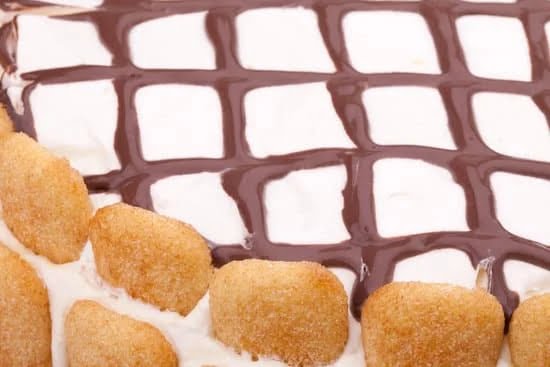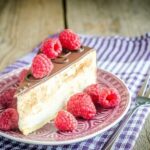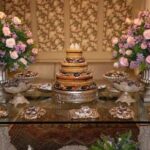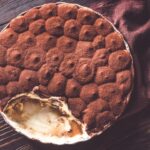Are you looking to learn how to make cake decorating a fun and rewarding hobby? Whether you’re an aspiring baker, a seasoned cake decorator, or just someone interested in learning a new skill, the art of cake decorating offers countless opportunities for creativity and self-expression.
In this article, we will delve into the essential tools and equipment needed for cake decorating, selecting the right cake and frosting for your designs, basic techniques such as piping, fondant, and buttercream, as well as advanced techniques like sculpting and airbrushing. We’ll also provide tips for troubleshooting common mistakes and showcasing your decorated cakes through photography and presentation.
Cake decorating is not only about making delicious treats; it’s also about turning them into works of art that delight the senses. From simple birthday cakes to elaborate wedding creations, the possibilities are endless when it comes to creating stunning designs and patterns on your baked goods. Understanding the fundamentals of cake decorating is essential for achieving professional-looking results, but it’s also important to remember that practice makes perfect when it comes to honing your skills.
In this comprehensive guide, we’ll cover everything you need to know about mastering the art of cake decorating. Whether you’re a beginner eager to learn the basics or an experienced decorator seeking new inspiration, this article will equip you with the knowledge and techniques necessary to create beautifully decorated cakes that are sure to impress friends, family, and clients alike. So let’s roll up our sleeves and dive into the wonderful world of cake decorating.
Essential Tools and Equipment for Cake Decorating
When it comes to cake decorating, having the right tools and equipment is essential for creating beautiful and professional-looking designs. Whether you are a beginner or an experienced baker, having the proper tools can make all the difference in your cake decorating journey.
Here are some essential tools and equipment that you will need for cake decorating:
- Piping bags: These are essential for piping frosting onto your cakes and creating intricate designs. Make sure to have a variety of sizes to accommodate different design needs.
- Piping tips: There are countless piping tips available, each serving a different purpose. From round tips for outlining and writing, to star tips for creating rosettes, having a variety of piping tips will allow you to create diverse designs.
- Offset spatula: This tool is used for spreading frosting and smoothing it out on the surface of your cake. It’s also handy for lifting delicate decorations and transferring them onto the cake.
- Turntable: A turntable allows you to easily rotate your cake as you decorate, making it easier to apply even layers of frosting and create smooth finishes.
- Fondant tools: If you plan on working with fondant, invest in a set of fondant tools including rolling pins, embossing tools, cutters, and smoothers.
- Airbrush kit: For more advanced techniques, an airbrush kit can be used to add color and create beautifully blended designs on your cakes.
Having these essential tools at hand will enable you to explore various cake decorating techniques while making the process smoother and more enjoyable. With the right equipment, anyone can learn how to make cake decorating a creative and rewarding hobby.
Selecting the Right Cake and Frosting for Decorating
Choosing the Perfect Cake
When it comes to cake decorating, choosing the right type of cake is essential. A sturdy, dense cake such as a pound cake or chocolate cake works best for elaborate designs and intricate decorations. These types of cakes can hold up well under the weight of the frosting and any additional decorations. It’s important to avoid using light and airy cakes like angel food or chiffon cakes, as they may not be able to support heavier decorations.
Picking the Ideal Frosting
The type of frosting you use can make a significant difference in how your decorated cake turns out. Buttercream frosting is a popular choice for decorating due to its versatility and ability to hold up well in different weather conditions. Fondant is another option that provides a smooth, clean surface for intricate designs and fondant decorations. For a lighter and fluffier finish, whipped cream or cream cheese frosting can be used, especially for more casual or rustic designs.
Matching Flavors
In addition to considering the texture of the cake and the type of frosting, it’s important to think about flavor combinations when selecting the right cake and frosting for decorating. Some classic pairings include chocolate cake with chocolate buttercream, vanilla cake with vanilla buttercream, and red velvet cake with cream cheese frosting. However, don’t be afraid to experiment with unique flavor combinations to create a truly memorable and delicious decorated cake.
By understanding how to select the right cake and frosting for decorating, you can set yourself up for success in creating beautifully decorated cakes that not only look stunning but also taste amazing.
Basic Techniques for Cake Decorating
When it comes to cake decorating, mastering basic techniques is essential for creating stunning and eye-catching designs. Piping, fondant, and buttercream are three fundamental elements of cake decoration that every aspiring baker should familiarize themselves with. Whether you’re a beginner or looking to refine your skills, learning how to use these techniques effectively will take your cake decorating to the next level.
Piping is one of the most versatile and commonly used methods for decorating cakes. By using a pastry bag fitted with various tips, you can create intricate designs, borders, and lettering on your cakes. From simple rosettes to elaborate floral patterns, piping allows for endless creative possibilities. Understanding different piping techniques such as star, round, and leaf tips will give you the foundation needed to beautifully decorate your cakes.
Fondant is another popular medium used in cake decorating. This pliable sugar paste can be rolled out and draped over the cake to create a smooth canvas for intricate designs. From elegant wedding cakes to playful birthday creations, fondant offers a polished finish and allows for sculpting detailed decorations like flowers, figures, and textures. Mastering the art of working with fondant involves learning proper rolling and handling techniques as well as troubleshooting common issues like air bubbles and cracking.
Buttercream is a classic icing that is not only delicious but also incredibly versatile for decorating cakes. With its smooth texture and ability to hold intricate designs, buttercream can be used for piping borders and decorations or spreading onto cakes for a seamless finish.
Learning different buttercream consistencies and how to achieve smooth surfaces will help elevate your cake decorating skills even further. By mastering these basic techniques of piping, fondant work, and buttercream application, you can unleash your creativity and bring any cake design to life with confidence.
Tips for Creating Stunning Cake Designs and Patterns
Creating stunning cake designs and patterns is one of the most exciting aspects of cake decorating. Whether you are a beginner or an experienced baker, there are several tips and tricks that can help you elevate your cake decorating game. Here are some essential tips for creating stunning cake designs and patterns:
- Choose the right color scheme: The colors you choose for your cake design can make a huge difference in the overall aesthetic. Consider using complementary colors or opting for a monochromatic color scheme to create a cohesive and visually appealing design.
- Experiment with different textures: Adding texture to your cake design can make it more visually interesting. Try incorporating elements like edible glitter, sprinkles, or edible flowers to add depth and dimension to your cakes.
- Utilize different piping techniques: Piping is an important skill in cake decorating, and there are numerous techniques you can use to create beautiful designs. Practice using different piping tips to create intricate patterns, borders, and floral designs on your cakes.
In addition to these tips, it’s also important to consider the overall theme or concept of your cake design. Whether you’re creating a birthday cake, wedding cake, or a simple celebration cake, the theme should guide your choices in colors, textures, and patterns. With practice and patience, you’ll soon be able to create stunning cake designs that will impress any crowd.
Remember that practice makes perfect when it comes to mastering the art of cake decorating – so don’t be afraid to experiment with different techniques and get creative with your designs.
Advanced Cake Decorating Techniques
Sculpting
Sculpting cakes is a challenging yet rewarding advanced cake decorating technique that allows you to create three-dimensional designs. To begin sculpting a cake, it is crucial to start with a sturdy and dense cake such as pound cake or mud cake.
These types of cakes hold their shape better and are easier to carve into the desired design. Once the cake is baked and cooled, it is recommended to chill it in the refrigerator before sculpting to make the process easier.
When sculpting a cake, it is essential to have the right tools such as a sharp serrated knife for carving and shaping, as well as sculpting tools like modeling sticks and small spatulas for adding intricate details. Additionally, using a crumb coat of buttercream or ganache before applying fondant or frosting can help provide stability and smooth out any imperfections in the surface of the cake.
Airbrushing
Airbrushing is a popular technique used in cake decorating to add color, shading, and intricate designs to cakes. An airbrush gun with edible food coloring is used to spray onto the surface of the cake, allowing for precision and control in creating stunning visual effects. Before using an airbrush gun on a cake, it is important to practice on parchment paper or a test cake to become familiar with how the colors disperse.
When airbrushing a cake, it’s important to work in thin layers and build up the desired color gradually. This helps prevent dripping or over-saturation of color on the cake. Additionally, stencils can be used with an airbrush gun to create intricate patterns and designs on the surface of the cake. The use of different sized nozzles also allows for variation in line thickness and shading effects when airbrushing.
By mastering these advanced techniques of sculpting and airbrushing, you can take your cake decorating skills to new heights, creating visually stunning and intricately designed cakes that will amaze your friends, family, or clients.
Troubleshooting Common Cake Decorating Mistakes
Even the most experienced cake decorators encounter issues from time to time when creating their edible masterpieces. It’s important to know how to troubleshoot these common cake decorating mistakes so that you can confidently tackle any challenges that arise. One of the most frequent issues is air bubbles in fondant, which can create an unsightly appearance on your cake.
To fix this problem, simply use a pin or needle to gently prick the fondant and release the trapped air. Smooth the area with your hands to ensure a flawless finish.
Another common mistake is uneven frosting, which can result in a lumpy or bumpy surface on your cake. To remedy this, start by applying a thin crumb coat of frosting and chilling the cake before adding more layers. This will help create a smooth and even base for your final coat of frosting. If you still notice imperfections, use a bench scraper or offset spatula to gently smooth out any lumps.
Additionally, color issues can sometimes occur when working with buttercream or royal icing. If your icing colors are not turning out as expected, try using gel-based food coloring instead of liquid ones, as they provide more vibrant and consistent results. If you find that your frosting has become too thin or runny, simply add more powdered sugar until you achieve the desired consistency.
By knowing how to recognize and address these common cake decorating mistakes, you can elevate your skills and produce stunning cakes that are free from imperfections. Troubleshooting these issues will allow you to focus on creating beautiful designs without being held back by avoidable errors.
Showcasing Your Decorated Cakes
When it comes to showcasing your beautifully decorated cakes, the right photography and presentation are essential. Whether you are looking to display your creations on social media, in a portfolio, or at an event, capturing the essence of your cake is crucial. Photography and presentation not only highlight your skills but also make your cakes even more enticing. Here are some tips on how to effectively showcase your decorated cakes through photography and presentation.
Firstly, lighting is key when it comes to photographing your cakes. Natural light is often the best option for capturing the colors and details of your cake. If natural light is not available, opt for soft, diffused lighting to avoid harsh shadows. Additionally, consider investing in a good quality camera or smartphone with a high-resolution lens to capture clear and crisp images of your cakes.
In terms of presentation, consider the background and props that will complement your decorated cake. Choose a simple and clean backdrop that doesn’t distract from the main focus – your cake. Props such as fresh flowers, fruit, or decorative utensils can add a touch of elegance to the overall presentation. When arranging the cake for display, pay attention to its surroundings and ensure that it is the focal point of the setup.
Lastly, editing can enhance the final look of your cake photos. Basic adjustments such as cropping, sharpening, and color correction can help improve the overall appearance of your images. However, be mindful not to alter the true representation of your decorated cakes through excessive editing. By following these photography and presentation tips, you can effectively showcase your beautifully decorated cakes in their best light.
Conclusion
In conclusion, cake decorating is truly an art form that allows for creativity, precision, and skill. From selecting the right tools and equipment to mastering basic and advanced techniques like piping, fondant work, and sculpting, there are countless ways to express your unique style through decorated cakes. With the tips provided in this article, you can learn how to make cake decorating a rewarding and enjoyable experience.
Whether you’re a novice or experienced baker, the joy of creating beautifully decorated cakes is unmatched. It’s not just about crafting visually stunning designs, but also about bringing joy to others through your creations. From birthday parties to weddings to special events, your decorated cakes have the power to bring smiles and make lasting memories.
As you continue on your cake decorating journey, don’t be afraid to experiment with new techniques and designs. Embrace challenges and learn from any mistakes along the way. With dedication and practice, you’ll be able to create stunning works of edible art that will be enjoyed by all who are lucky enough to indulge in them.
Harnessing the knowledge from this article about essential tools, techniques for creating stunning designs, advanced methods such as sculpting and airbrushing, as well as troubleshooting tips will help you become a skilled cake decorator over time. So go ahead; get started on your next masterpiece.

Welcome to our cake decorating blog! My name is Destiny Flores, and I am the proud owner of a cake decorating business named Cake Karma. Our mission is to provide delicious, beautiful cakes for all occasions. We specialize in creating custom cakes that are tailored specifically to each customer’s individual needs and tastes.





